By Chris Martinez
March. 2012-
If only we could partition all of the nutrients we consume on a daily basis directly into our muscle cells as opposed to our fat cells. Ideally, this would make a perfect-healthy world. There wouldn’t be such an epidemic of obesity, diabetes, diseases, metabolic syndrome, etc. Instead, we would have a bunch of healthy, ripped, and fit bodies walking around, aka super humans. Unfortunately, the body just doesn’t work like that and once again you have to be in-control and work for something. This brings me to the discussion of how exercise helps partition nutrients into muscle cells, rather than fat cells. In this article I will be talking about how different ratios of carbohydrate to protein directs nutrients from fat to muscle tissue, roles of insulin and exercise, and carbohydrate thresholds.
Different ratios of carbohydrate to protein directs nutrients from fat to muscle tissue
(1) A study from the Journal of Nutrition and Metabolism tested different carb to protein ratios to see if the majority of the nutrients would be partitioned into muscle or fat cells. They took 2 groups and fed 1 group a high carb, low protein, and moderate fat diet (12% Protein, 60% Carbs, 28% fat), something similar to what the food guide pyramid recommends and they fed the other group a high protein, moderate carb, and moderate fat diet (35% Protein, 35% Carbs, 30% fat), something similar to the zone or Mediterranean diet. What they found was in the high carb diet the majority of the insulin activating signal was found mainly in fat tissue and in the high protein diet insulin activating signal was found mostly in skeletal muscle tissue.
Now let’s hit the rewind button real quick, so you don’t get confused, let’s start off on a very basic understanding of what insulin does. Insulin is like a double edged sword, when you consume carbs, you get a rise in glucose, that rise in glucose sends a signal to your liver and pancreas to release insulin which stimulates increased glucose transporter density in muscle cells. Insulin can either: A) deliver amino acids into the muscle cell (which in turn help facilitate muscle growth) and carbohydrates into the bloodstream to be used for energy or into the muscle cell and liver to be stored as glycogen or B) too much insulin at the wrong times will shut down the body’s ability to utilize fats for fuel, which in the long run will contribute to an increase in body fat.
Now back to the above study, what you can see with the high protein group (zone diet), this eliminated the insulin effect and used glucose (carbs) for muscle, brain, and used very little towards fat tissue. What you can see with the higher carb diet (food guide pyramid), this overloaded the system & posted a high insulin response towards fat tissue and the body will automatically push glucose into fat and bypass muscle.
With the high carb, low protein meals, it skips activation in muscle and almost gets all the activity in fat tissue in regards to insulin signaling. As opposed to with a higher protein, moderate carb diet, you get most of the signaling activated in skeletal muscle. So, what we are really talking about is the insulin sensitivity (Insulin sensitivity refers to how much glucose your body can handle) between the two tissues directed by which kind of meal you choose to eat. If you choose to eat a high carb, low protein meal then you will activate insulin signaling in fat tissue but if you eat a high protein, moderate carb meal then you will activate it in muscle tissue (where you want it).
Roles of insulin and exercise
Exercise changes the partitioning of where the nutrients go in the body. What muscle does, is it directs glucose and directs insulin to act on muscle tissue. Exercise senses you to glucose because it increases the number of GLUT-4 receptors you have on your cell surface. Think of GLUT-4 as the big bouncer at night clubs, who controls who gets in and tells people to take a hike. So, GLUT-4 kind of changes the direction glucose is going to go (just like a bouncer would control who gets in and who doesn’t) because fat doesn’t have the same response, if you work out your muscle, fat doesn’t increase it, you don’t want a bunch of GLUT-4 receptors on the surface of your fat cells, that means glucose is going to be directed there, you want it on the surface of your muscle cells. So specifically working out, whether that be HIIT cardio or HIT (high intensity training) resistance training increases the number of GLUT-4 receptors, the muscle cell surface and increases your insulin sensitivity (2,3).
We all have carbohydrate thresholds
Carb thresholds vary from person to person and their activity levels. Training hard or less, male or female, no two bodies are alike and everything will be personalized. There’s no black and white answer when it comes to carb thresholds, everybody has to be aware of their own, unless you have a trainer or coach taking care of all the guess work for you. If you’re active compared to sedentary (couch potato), you’ll be able to tolerate more glucose (carbs) and your insulin response will be beneficial, rather than counterproductive. Meaning you will get a signal for glucose to be directed into muscle rather than fat. Let’s take eating 3 meals a day as an example, for an obese or sedentary person. The most amounts of carbs you can consume at a meal without a spill over is roughly 30-50g (this will provide necessary glucose for brain and liver), this prevents an insulin spike. Once you’re above 50, you need insulin to drive it into tissues. But, please note these are very general numbers and do not apply to everyone because everyone’s threshold is different. For a bodybuilder, the goal is to max out building muscle and protein, so carb threshold will be lower and different as opposed to a sprinter or runner because they will be burning through carbs and runners will have higher carb thresholds. Basically, carb thresholds depend on so many factors and the only way to figure out your own is really through trial and error.
Wrapping all of this up
In a perfect world we would love to partition all of the nutrients we consume on a daily basis directly into our muscle cells as opposed to our fat cells. But, as you can see throughout this article, the human body is much smarter than us and much more complicated than we think. But, luckily research shows we have control of where the majority of our glucose can be stored and that is in muscle cells by just simply having a high protein diet, figuring out your carb threshold, and adding more exercise to your daily routines. At the end of the day when it comes to carbs you have to pay attention to how your body responds to this nutrient. There’s no lower limit for carbs because it is not an essential nutrient for humans like protein and fat. People could survive without eating carbs. So, it all depends on activity levels, goals, frequency, intensity, duration, sets, reps, etc. This is the only way to figure out where this carb threshold is for you. Bottom line is to take care of protein and fats first, and then use carbs as an energy filler and on top of all that, add in more exercise (specifically weight training) so that you can live a longer, healthier, and sexier life. Now that you have all of this info, don’t just sit there… DO SOMETHING ABOUT IT! Peace
References:
(1) S Devkota, D K Layman. Increased ratio of dietary carbohydrate to protein shifts the focus of metabolic signaling from skeletal muscle to adipose. J Nutri and Metab. 2011.
(2) Layne E. Norton
(3) Kraniou GN, D Cameron-Smith, M Hargreaves. Effect of short term training on GLUT-4 mRNA and protein expression in human skeletal muscle. Exp Physiol. 2004; 89 (5):559-63

